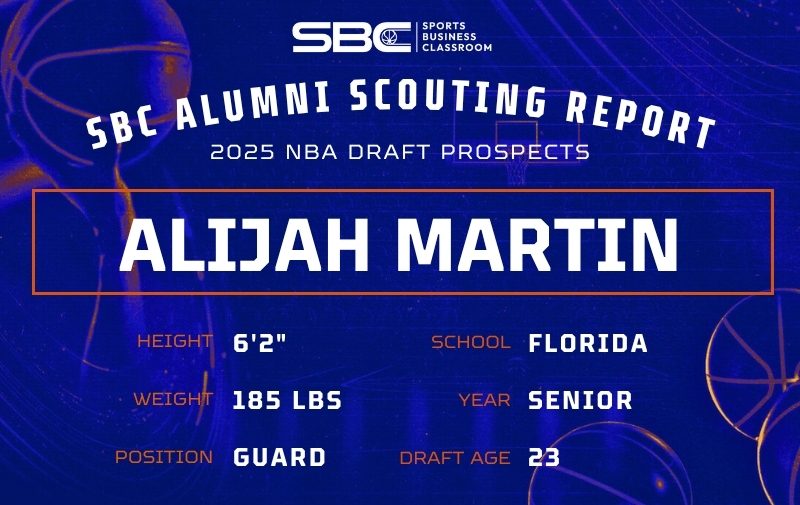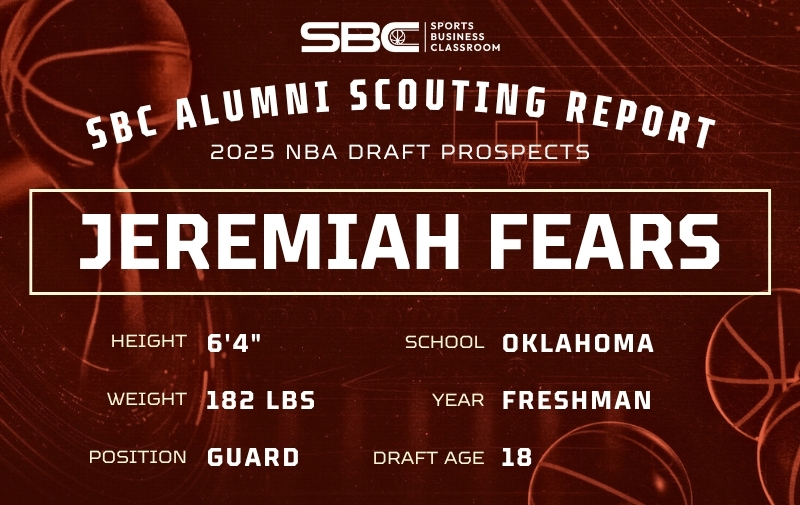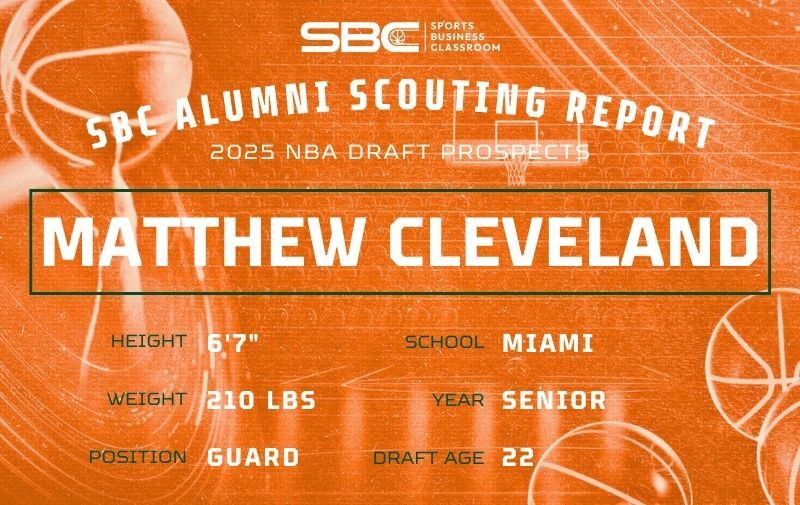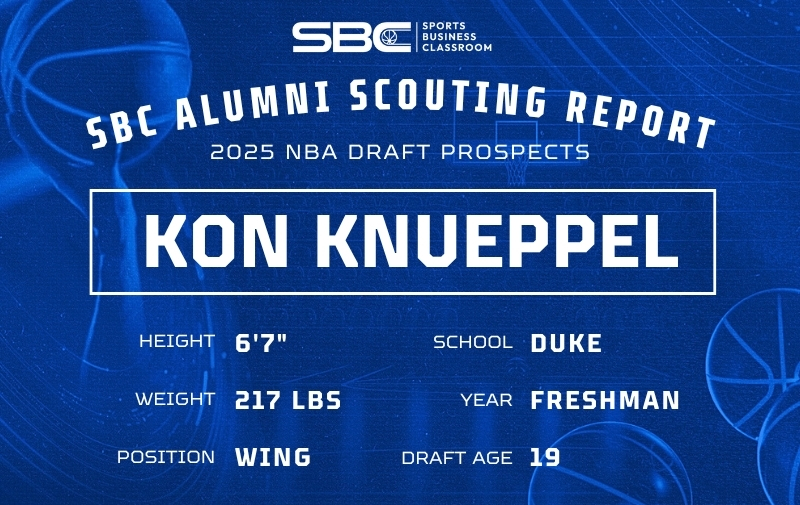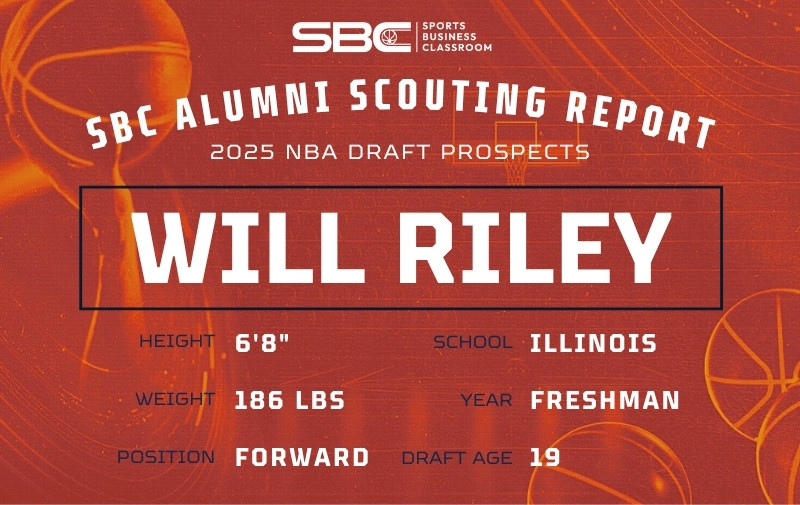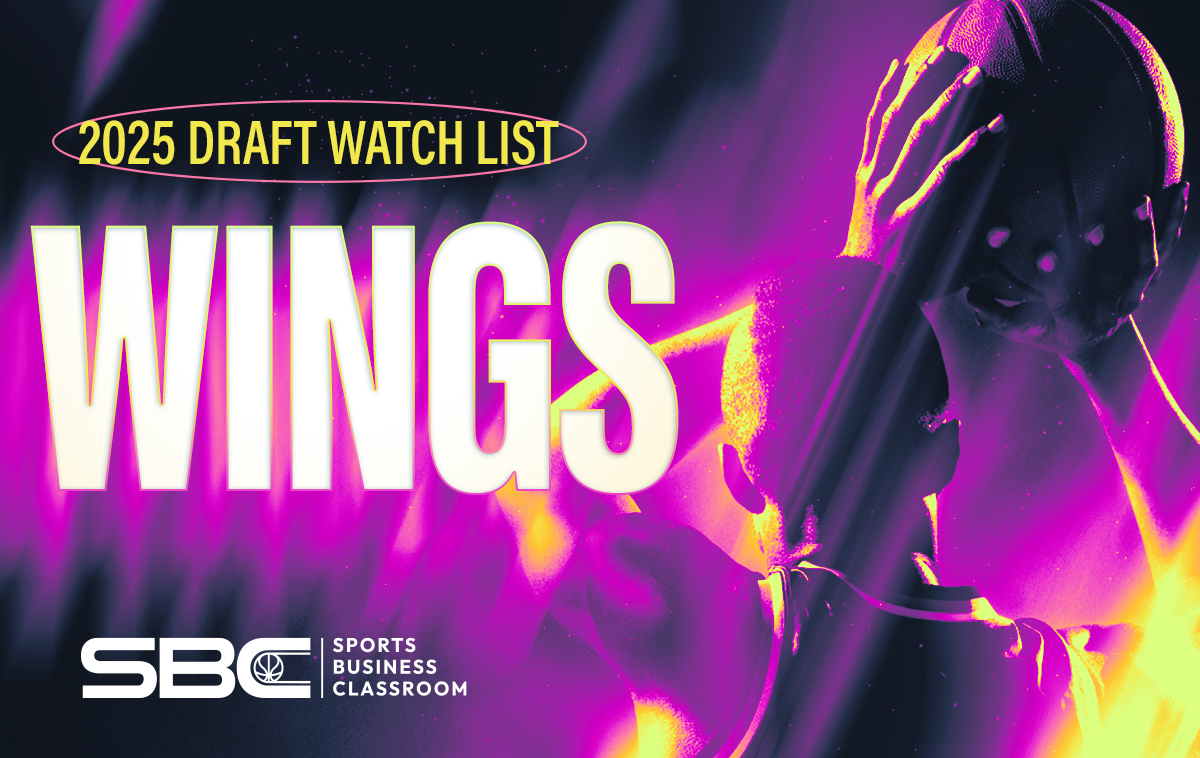
With the NCAA and other leagues worldwide officially in full swing and the NBA season already at the first quarter mark, NBA scouts are now hard at work looking for their teams’ next potential star and core pieces. As a part of Sports Business Classroom’s 2025 NBA Draft series, the following are wings to watch ahead of June’s draft.
Ace Bailey, the 6’10” scoring machine out of Rutgers, is solidified at the top spot on this list. Bailey’s size and elite offensive abilities give him incredible potential to be one of the NBA’s premier scorers. He shoots more mid-range jumpers than most his age, taking about 7.3 per game from “far-2” range and making them at a 47 percent clip (via Barttorvik). He can get to his spots, and although his shot-making has not been the most consistent through nine games thus far, he should be able to grow here with more reps. His three-point shooting has been challenging to judge. His shot volume and percentage vary widely on a game-to-game basis, but 35.1 percent on 4.1 attempts per game so far in his young career is something that can be built upon. His current areas for improvement are his defense and play making, which appear to be influenced by his maturity level on the court. He can be too zoned in on what he is already good at; he often lacks focus on other areas. This is a mental hurdle that the 18-year-old will have to overcome to reach his full potential.
Drake Powell has had an underwhelming start to his freshman year after being a highly touted prospect coming into the season. He has shown flashes and has the frame to carve himself a spot in the mid-late first round of the 2025 draft. Outside of one 18-point game, Powell has not scored more than seven points in a game this season. However, with a reduced role on a mature UNC team with championship aspirations, there is little room for opportunity with Powell on offense. He has also displayed defensive versatility with high effort, guarding 1-4, fighting through screens, hustle, vertical athleticism, and shooting 40 percent from deep (on low volume, two attempts per game). Still, if he can be a reliable shooter, along with his other qualities, he should be able to impact any lineup he is rolled out with positively.
First Round:
- Ace Bailey – Rutgers
- Liam McNeely – UConn
- Kon Knueppel – Duke
- Mackenzie Mgbako – Indiana
- Drake Powell – UNC
- Will Riley – Illinois
- Hugo Gonzalez – Real Madrid (Spain)
- Alex Karaban – UConn
Second Round:
- Miles Byrd – San Diego State
- Dailyn Swain – Xavier
- Carter Bryant – Arizona
- Karter Knox – Arkansas
- Noah Penda – Le Mans (France)
- Isaiah Evans – Duke
- Andrej Stojakovic – California
- Mitar Bosnjakovic – Partizan Belgrade (Serbia)
G League/Undrafted:
- Koby Brea – Kentucky
- Adama Bal – Santa Clara
- Payton Sandfort – Iowa
- Tyon Grant-Foster – Grand Canyon
Miles Byrd of San Diego State has pleasantly surprised the Aztecs this season. Coming into his third season, having yet to start a game, Byrd has been one of their most consistent players on both ends of the floor. He plays the game with great pace and a sense of calmness, moving in a calculated manner with significant control. Byrd moves well without the ball, and while shooting is his most notable attribute, he is an underrated passer, making strong reads, specifically to cutters off the catch. His jump shot is what will get him drafted as he thrives coming off screens, both at the elbow and behind the arc and knocking down shots. He is currently shooting 39.5 percent from three-point range on 5.4 attempts per game. Defensively he is committed, but his lack of explosiveness limits him here against quick guards and also limits his ability to create his own shot offensively. Look for teams who draft him to be looking for a reliable, shooting-focused wing with play-making upside.
Noah Penda is a jack-of-all-trades, and at just 20 on draft night, he has a strong foundation awaiting development. Penda has given Le Mans stats across the board. He can reliably defend 2-4, shoot the three well off the catch (37.8 percent on the season), and move without the ball, finding open lanes for cuts. Penda is also a quality rebounder and play maker (5.6 rebounds per game and 2.3 assists per game). Being good at many things (but not necessarily excellent at a specific skill) may help him get drafted for a team looking for a safer selection; Penda will need to find his niche to become a full-time rotational player. If he does, while providing those complementary skills, Penda could carve out a long career.
Koby Brea is arguably the best shooter in college basketball right now. Coming into his first season with the new-look Kentucky Wildcats, Brea has shot the three-ball at 53.1 percent thus far. At 6’6”, he can shoot it off the catch or the dribble and has one of the purest strokes in the game. However, what separates him from elite three-point shooters the league has seen such as Klay Thompson, JJ Redick, or Buddy Hield, is the speed at which they move without the ball. Brea moves well but lacks the elite burst used to pop off screens or sprint from corner to corner to get open. This may cause him to struggle to consistently find open looks and thrive against basketball’s best.


